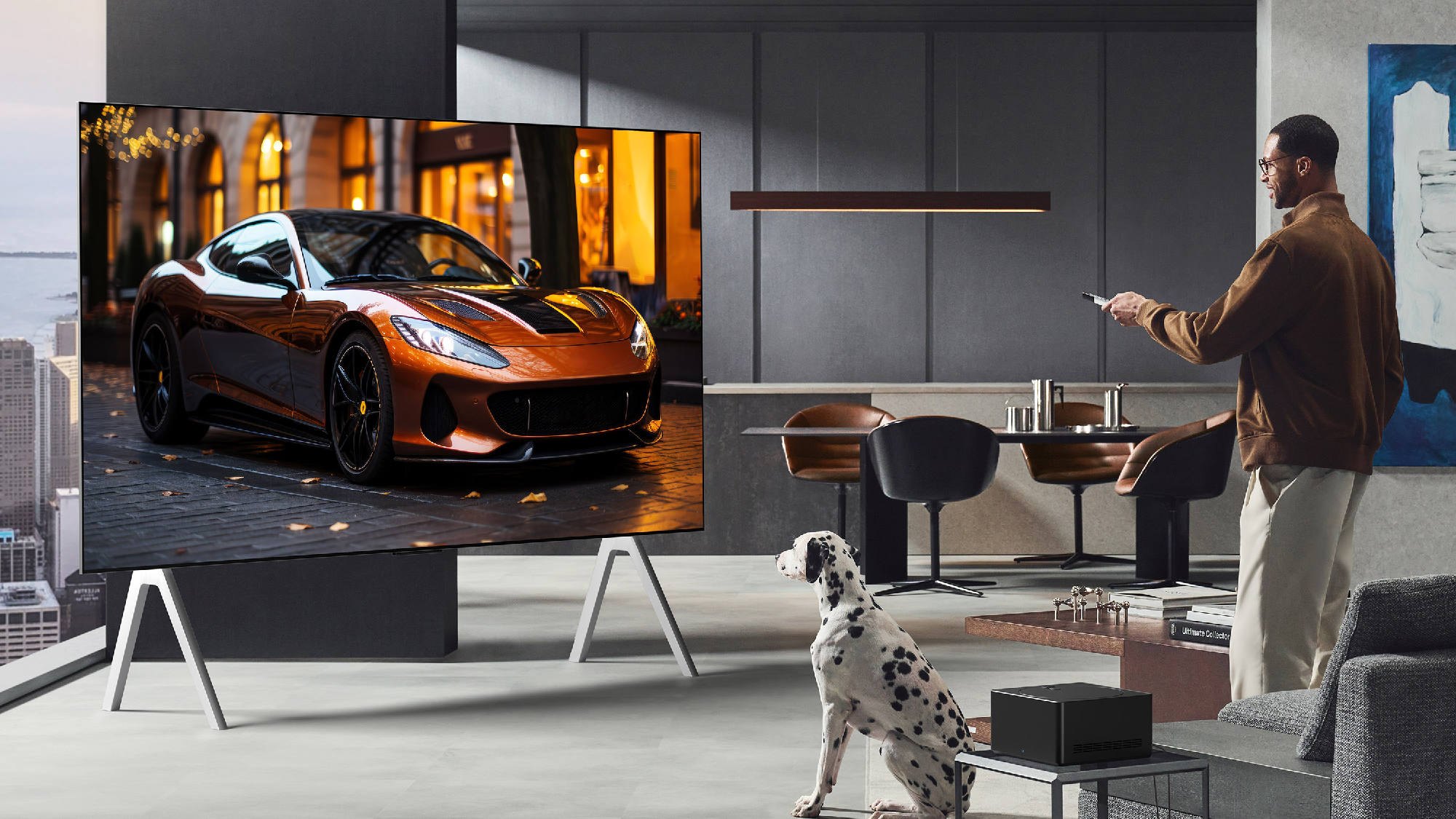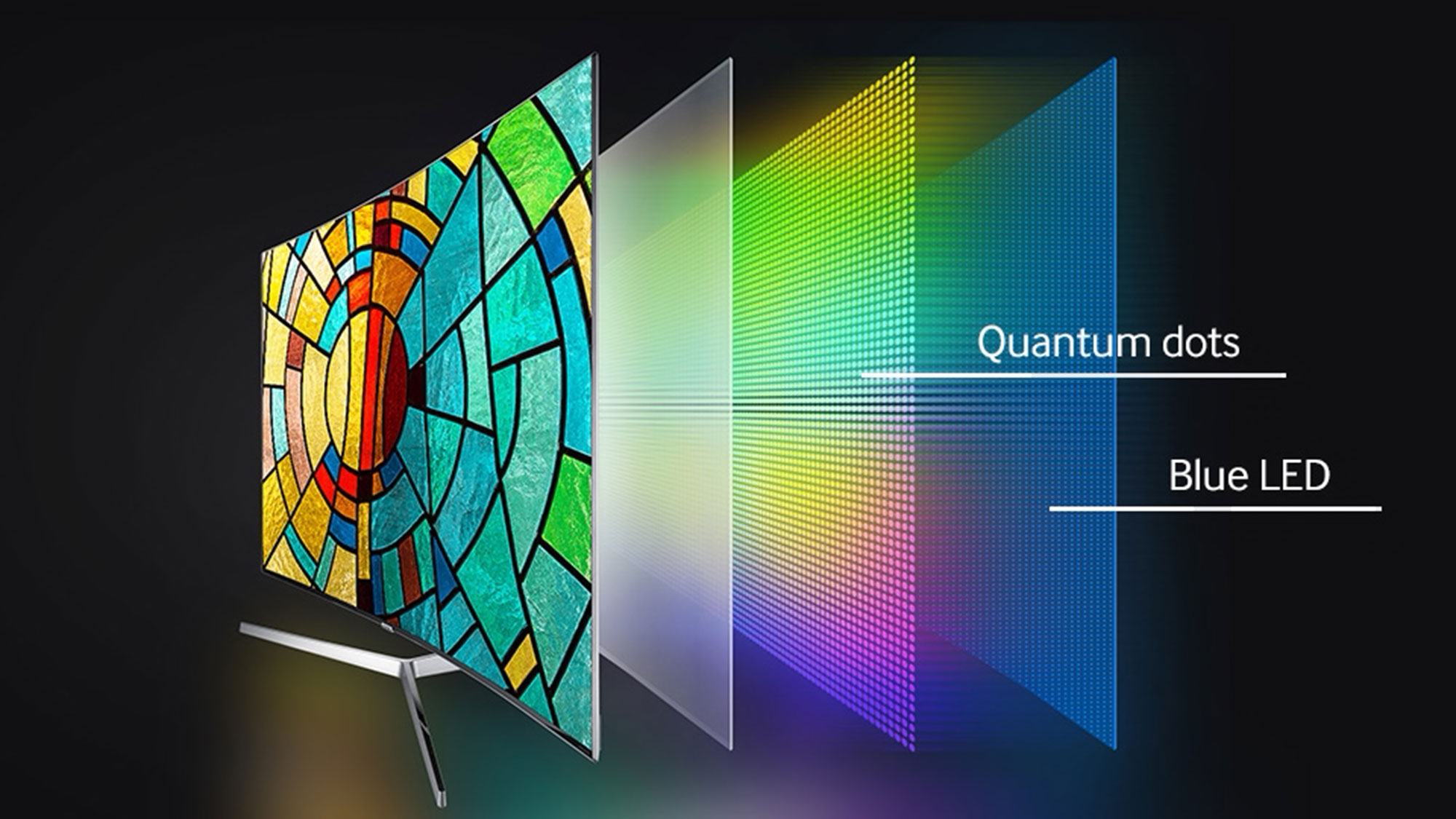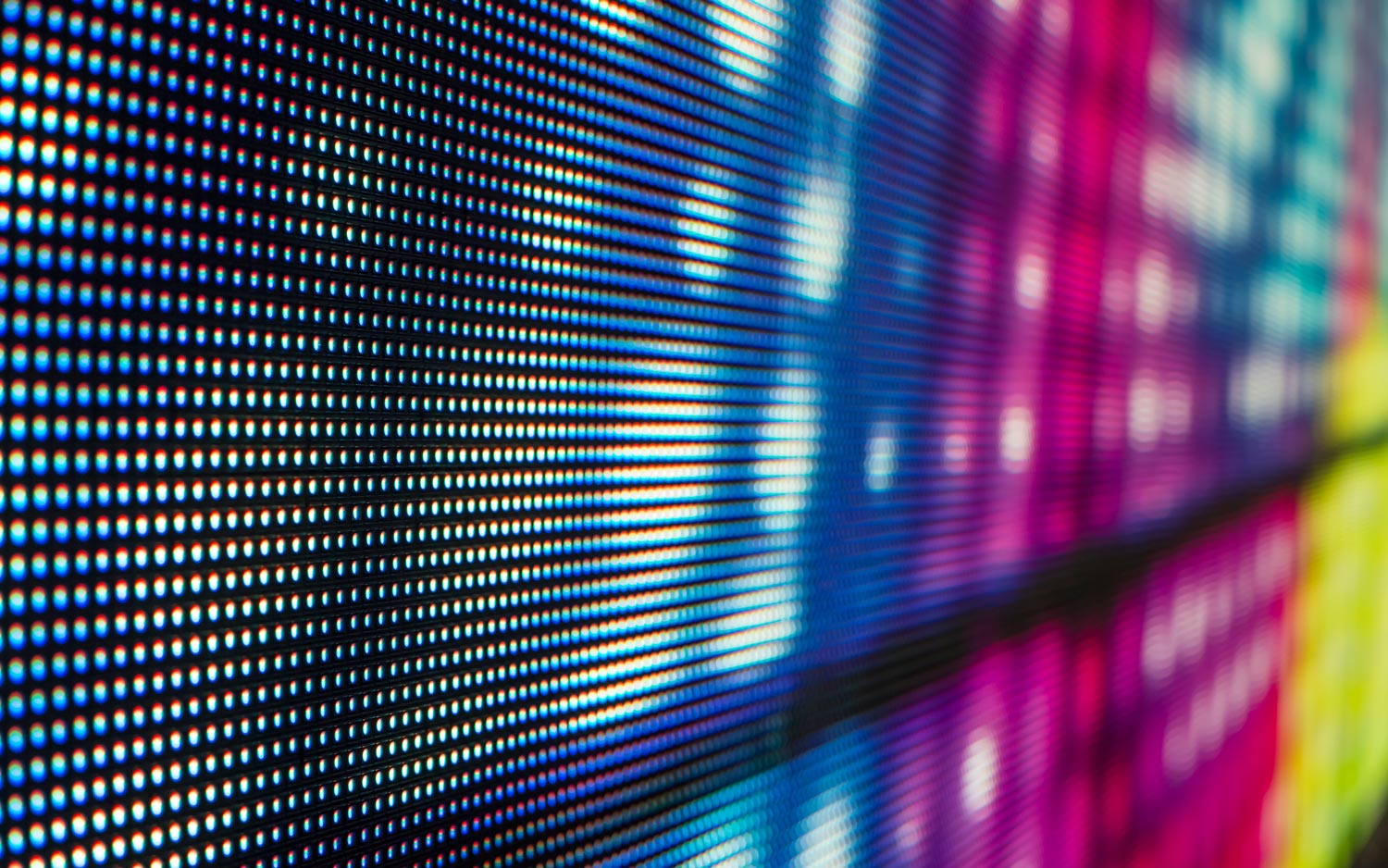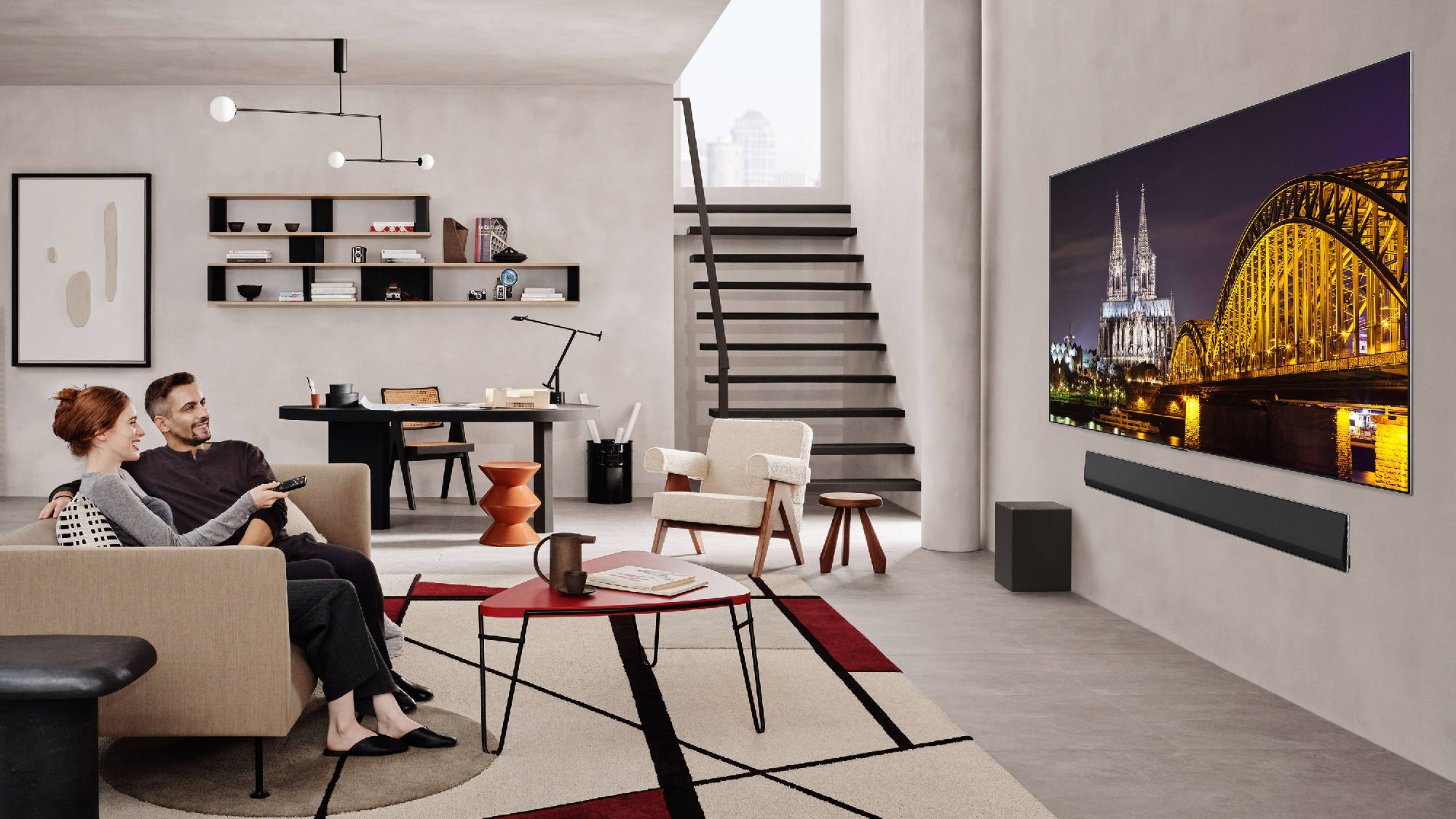Could QDEL replace OLED? Yes, and it might happen sooner than expected
QDEL could end up being better and cheaper than OLED

As quickly as they've come, QD-OLED and OLED TVs might soon be replaced with newer, higher-brightness display technologies. In one corner, there's Micro-LED that uses microscopic LEDs for perfect backlight control and upwards of 10,000 nits peak brightness. In the other, there's QDEL or Quantum Dot Electroluminescent displays.
QDEL, also known as Nano-LED displays, leverage quantum dots, like some current-generation TVs but instead of using quantum dots to create vibrant colors while blocking as little light as possible from the backlight, QDEL TVs do away with the backlighting panel altogether, instead applying an electrical current to the quantum dots themselves, which then light up in colors.
Why is that a good thing? Well, instead of the multiple layers that today's TVs are made up of, QDEL screens produce vibrant images with high contrast with only one layer – although in all likelihood they'll make use of other layers over the top of the quantum dots to produce a more uniform and more controlled image.
Thinner and cheaper to produce than MicroLED, QDEL could just be the next big step in TV evolution, so it's worth knowing anything and everything about the technology before it makes its appearance on store shelves sometime in the next few years.
How does QDEL compare to OLED and Mini-LED?

So, what makes this approach in particular so much better than current-generation TVs? Let's start with Mini-LED TVs like Tom's Guide's best TV of the year, the Hisense U8N. Mini-LED TVs make use of thousands of small LEDs behind color filters to exert more control over black levels than previous generation LED TVs ever could.
That said, Mini-LED TVs still don't have pixel-level control over backlighting. Instead, those tiny LEDs serve as the backlight for a number of pixels at a time, which means that Mini-LED TVs don't quite achieve the true black levels that other display technologies can reach.
In other words, with pixel-level control, QDEL TVs will be able to produce deeper and more accurate black levels than Mini-LED TVs.
Sign up to get the BEST of Tom's Guide direct to your inbox.
Get instant access to breaking news, the hottest reviews, great deals and helpful tips.
Of course, current generation OLED TVs have that pixel-level control, which is why OLED panels are used on most of the highest-end TVs you can buy today – like the Samsung S95D. Most current generation OLED TVs actually use an OLED layer as the backlight, shining that light through color filters or even a quantum dot layer to produce different colors.
The only problem with that is that OLED panels use an organic material that can degrade over time, which is why OLED screens can suffer from burn-in. Quantum dots can degrade over time too, especially when an electrical current is applied to them – but in the absence of that organic material, researchers believe that next-generation quantum dots will be far less susceptible to degradation.
Not only will they be less prone to pixel degradation, but some experts expect QDEL screens to get brighter than OLED panels, too. Admittedly, OLED displays have gotten a whole lot brighter over the years, so whether QDEL will surpass this next crop of four-stack OLEDs coming from LG Display or Samsung's next generation of QD-OLEDs remains to be seen.
What about Micro-LED TVs?

The big elephant in the room here is Micro-LED. That's because, like QDEL, Micro-LED pixels are self-emissive, with each pixel containing a tiny red, blue, and green LED, which combine to produce different colors as needed. It also means that Micro-LED displays have that pixel-level control for true blacks.
Quantum dots seem to be able to produce more saturated and more pure colors than LEDs, which is why quantum dots are used on many high-end TVs today.
But QDEL could win here, too. Quantum dots seem to be able to produce more saturated and more pure colors than LEDs, which is why quantum dots are used on many high-end TVs today. Of course, it's entirely possible that Micro-LED technology could be combined with a quantum dot layer for purer and more vibrant colors, which would create a stunning image with a high level of brightness.
Likely, however, QDEL could end up doing a similar job as Micro-LED for much cheaper. Micro-LED has proven expensive to produce. While QDEL isn't being used on consumer screens just yet, it could end up being much cheaper given the fact that quantum dots at this point are relatively easy to manufacture.
The main challenge in manufacturing QDEL displays has so far been the fact that it has been hard to print QDEL screens that have a pixel density higher than a few hundred pixels per inch (PPI), though that seems to be changing as TV makers develop new manufacturing methods. To be clear, a few hundred PPI is pretty good, considering the fact that a 4K TV with a 65-inch size is actually only around 68 PPI.
Could QDEL be the OLED killer?

In the immediate future, the big question is whether or not QDEL could end up replacing OLED. That does indeed seem very possible: The big advantage of QDEL may end up being the fact that it could be cheaper to manufacture than OLED and Micro-LED panels, without the risk of things like burn-in.
Not only does it have a leg up in performance, but QDEL could be ready for consumers before Micro-LED, considering the challenges that micro LED development has faced. We’ve already seen prototypes of QDEL displays, suggesting that consumer-ready screens could be sooner than you might think.
To that end, it might not be a question of if OLED and QD-OLED TVs will die off, but when.
More from Tom's Guide
Christian de Looper is a freelance writer who has covered every facet of consumer tech, including mobile, audio, home theater, computing, gaming, and even car tech. At Tom’s Guide, Christian covers TV and home theater tech, and has reviewed dozens of TVs, soundbars, and A/V receivers, including those from the likes of Samsung, Hisense, TCL, and Vizio.
You must confirm your public display name before commenting
Please logout and then login again, you will then be prompted to enter your display name.

